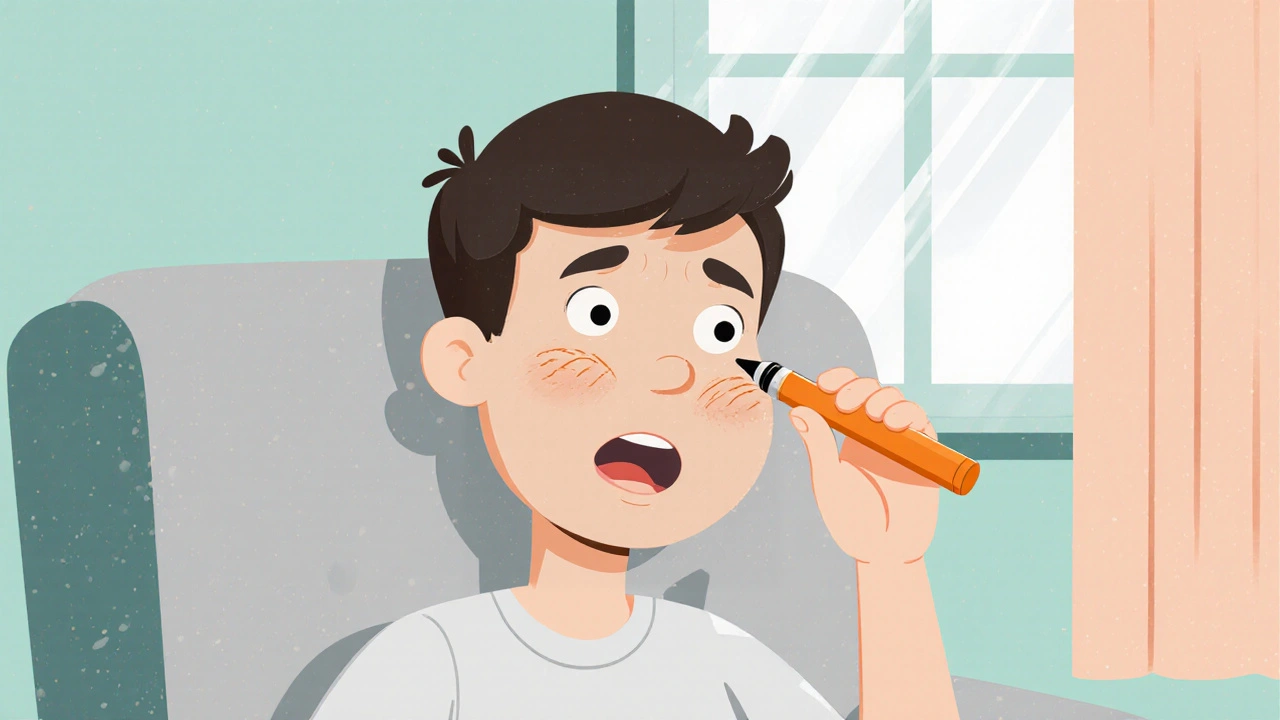When dealing with prednisolone skin side effects, unwanted changes like thinning, bruising, or acne that appear after taking the steroid, the goal is simple: keep the medication's benefits while protecting the skin. Also known as corticosteroid‑induced skin changes, these reactions happen because prednisolone suppresses inflammation but also interferes with collagen production and skin barrier function. Understanding the root cause lets you take targeted steps instead of blind trial‑and‑error.
One key player in this picture is Prednisolone, a synthetic glucocorticoid that mimics the body’s cortisol to control inflammation. It belongs to the broader class of corticosteroids, drugs that reduce swelling but can thin the skin over time. When you notice dryness, easy bruising, or a rash, think of it as a signal that the drug’s side‑effect pathway is active. Adjusting the dosage or schedule – for example, tapering down after the acute phase – often lessens the skin impact without losing therapeutic power.
First, talk to your prescriber about a dosage adjustment. Reducing the dose by 10‑20 % or switching to an alternate‑day regimen can give the skin a break while still controlling the underlying condition. Second, layer in skin‑friendly products: gentle, fragrance‑free moisturizers, barrier‑restoring creams containing ceramides, and mild cleansers. Applying moisturizer right after a shower traps water in the outer layer, counteracting the drying effect of prednisolone.
Third, consider topical steroids with a lower potency for any localized flare‑ups. Using a mild steroid on the skin instead of increasing the oral dose helps keep systemic exposure low. Fourth, protect the skin from external insults – wear sunscreen, avoid hot water, and steer clear of harsh scrubs. These simple habits reduce the risk of further thinning or bruising.
Lastly, keep an eye on nutrition. Vitamin C, zinc, and collagen‑supporting foods (like bone broth or leafy greens) give the skin the building blocks it needs to recover. Some patients also find that a short course of a non‑steroidal anti‑inflammatory drug (NSAID) can handle minor pain without adding more steroid load.
All these strategies—dosage tweaks, moisturization, selective topical use, protective measures, and nutrition—fit together like puzzle pieces. They illustrate how managing prednisolone skin side effects isn’t a single fix but a coordinated plan that balances medication benefits with skin health. Below you’ll find a curated set of articles that dig deeper into each of these areas, from detailed dosage‑reduction guides to reviews of the best moisturizers for steroid‑treated skin. Dive in and arm yourself with the knowledge to keep both your condition and your skin under control.
